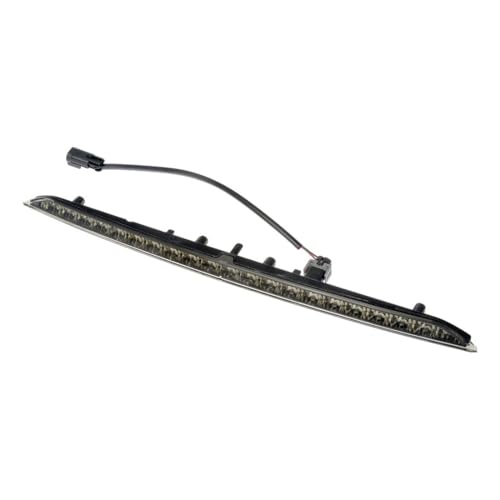When we’re in the market for a used car, it’s like embarking on a treasure hunt. We’re all searching for that perfect gem, a vehicle that’s both reliable and a joy to drive. The Ford Edge, with its sleek design and impressive features, often pops up on our radar. But as with any quest, there are pitfalls to avoid.
Navigating the sea of options, we’ve come across certain Ford Edge models that might not be the wisest choice. It’s not all about the aesthetics or the initial performance; longevity and reliability play huge roles in our decision-making process. We’re here to share our findings on the Ford Edge years that might be best to steer clear of.
Let’s dive into the specifics, arming ourselves with the knowledge to make the best choice for our needs and avoid any potential bumps down the road.
Understanding the Ford Edge: An Overview
Building on our journey to find a reliable used car, we turn our attention to the Ford Edge. Known for its appealing design and comfortable ride, the Edge offers a mix of performance and utility that has attracted many buyers over the years. However, not all Edge models have lived up to expectations regarding longevity and reliability.
Introduced in 2007, the Ford Edge is a midsize crossover SUV. It stands out for its spacious interior, offering ample room for passengers and cargo alike. Across its lifespan, the Edge has seen several updates and facelifts, with new features and technologies introduced to keep it competitive.
Equipped typically with a choice of three engines – a base four-cylinder, a turbocharged four-cylinder EcoBoost, and a more powerful V6 – the Ford Edge caters to a broad audience. Its versatility extends to its drivetrain options, with both front-wheel drive (FWD) and all-wheel drive (AWD) configurations available, making it adaptable to various driving conditions.
Despite its strengths, certain Ford Edge models have not performed well in the areas of reliability and repair costs. Some years have been marked by recurring issues that have led to frustrations for owners. Problems such as transmission failures, electrical glitches, and water leaks have been noted, particularly in specific model years.
As we delve deeper into which Ford Edge years to avoid, it’s essential to keep in mind that our focus isn’t just about pointing out flaws. Instead, we aim to arm you with knowledge, ensuring that your investment in a used Ford Edge is a wise one. Identifying which models to steer clear of helps narrow down your search to the most reliable and cost-effective options, ensuring a smoother ride ahead.
The Importance of Choosing the Right Model Year
Selecting the correct model year is crucial when shopping for a used Ford Edge. This decision affects not just the initial purchase price but also long-term satisfaction and cost of ownership. Our exploration of the Ford Edge models to avoid has shown that certain years are prone to significant issues, which can lead to unexpected expenses and inconvenience.
Firstly, choosing a model year with a strong track record for reliability helps ensure that your vehicle remains dependable. Cars like the Ford Edge, designed for comfort and utility, are often used as family vehicles or for commuting, making reliability an essential factor. Avoiding models known for persistent problems helps prevent the hassles of frequent repairs.
Secondly, a model year with fewer issues tends to hold its value better. Vehicle depreciation is inevitable, but cars with known defects or reliability concerns depreciate faster. By selecting a more reliable Ford Edge model year, you’re likely to enjoy a better resale value if you decide to sell the vehicle in the future.
Finally, safety features and technology improve over time. Certain model years may lack the latest safety features or technological enhancements that enhance the driving experience. Being aware of the differences between model years allows you to choose a used Ford Edge that doesn’t just avoid known issues but also meets your needs for safety and technology.
Understanding the importance of selecting the right model year ensures a wise investment in a used Ford Edge. By avoiding problematic models, you maximize the value, reliability, and overall satisfaction of your vehicle. Our guide aims to arm you with the knowledge needed to make an informed decision, ensuring you select a Ford Edge that’s not only free of well-documented issues but also suits your requirements for a safe and enjoyable driving experience.
Ford Edge Years to Avoid
Continuing from our previous discussion on the Ford Edge’s reliability, we find it important to guide you on specific model years that may not meet the mark in terms of dependability. Being informed about these models can save you from unforeseen troubles and expenses down the line.
- 2007-2008 Models: The Ford Edge made its debut in 2007, and as with many first-generation models, it had its fair share of teething problems. Issues ranged from transmission failures, which could lead to erratic shifting or even complete loss of power, to problems with the electronic systems causing various accessories to malfunction. These issues were most prevalent in the 2007 and 2008 model years.
- 2011-2014 Models: Another period to be wary of is the 2011 to 2014 Ford Edge models. During these years, customers reported significant problems related to the cooling system, including overheating engines that could potentially lead to engine failure. Additionally, these years were notorious for their electrical glitches that affected the dashboard functionality and exterior lighting, which could compromise safety.
Remember, our objective is to ensure you make an investment in a vehicle that offers not just comfort and design, but also reliability and peace of mind. By avoiding the Ford Edge models from 2007-2008 and 2011-2014, you’re more likely to find a version of this popular SUV that will serve you well without the headache of frequent repairs. Always consider performing a thorough check and consulting vehicle history reports before making your purchase, as individual care and maintenance history can vary greatly even within problematic model years.
Alternative Ford Edge Years to Consider
After discussing the Ford Edge years to avoid, it’s important to shine a light on the model years that stand out for their reliability, safety, and technological advancements. These selections represent the Ford Edge at its best, offering an enjoyable and secure driving experience.
- 2009-2010 Ford Edge: These model years saw improvements in reliability and performance. Following the initial hiccups of the newly introduced models, Ford addressed many of the early issues, making the 2009 and 2010 models solid choices for those seeking a used Edge.
- 2015 Ford Edge: Marking the beginning of the Edge’s second generation, the 2015 model year introduced a fresh design and advanced technology features. It’s lauded for its improved handling, comfortable interior, and enhanced safety features, setting a new benchmark for the model.
- 2018-2019 Ford Edge: Benefiting from mid-generation updates, the 2018 and 2019 models feature refined exteriors and interiors, along with the introduction of the Edge ST, offering a performance-oriented option. These years are notable for their reliability and the inclusion of standard safety features, such as automatic emergency braking and blind-spot monitoring.
- 2020-2021 Ford Edge: These recent models continue to build on the Edge’s strong points with state-of-the-art technology, including Ford’s Co-Pilot360 safety system as a standard feature. They offer a balance of comfort, technology, and performance, making them excellent choices for those prioritizing modern features alongside reliability.
By opting for one of these recommended model years, buyers can enjoy the benefits of owning a Ford Edge, including stylish design, spacious interiors, and advanced safety features, without the drawbacks associated with the earlier problematic years. Remember, performing a thorough check and consulting vehicle history reports can further ensure a wise purchase decision.
Maintenance Tips for Your Ford Edge
Maintaining a Ford Edge, especially if it’s a model from the years we recommend, is key to ensuring its longevity and performance. Regular maintenance can prevent common issues and help avoid the problems seen in the years to avoid. Here’s a comprehensive list of tips to keep your Ford Edge running smoothly:
- Check and Replace the Fluids Regularly: Engine oil, coolant, brake fluid, and transmission fluid are vital for the vehicle’s health. Changing the engine oil every 5,000 to 7,500 miles, depending on use and manufacturer’s recommendations, can significantly extend the life of your Ford Edge.
- Inspect the Brakes: Brake pads and rotors need checking every 10,000 miles. If you hear any unusual sounds or experience decreased stopping power, it’s time for a checkup.
- Monitor Tire Pressure and Tread: Ensuring your tires are properly inflated and have adequate tread not only keeps you safe but also improves fuel efficiency. Rotate tires every 5,000 to 8,000 miles to ensure even wear.
- Replace the Air Filter: A clean air filter improves engine performance and efficiency. Check it every 12,000 to 15,000 miles, and replace as needed.
- Stay on Top of Battery Maintenance: Car batteries typically last 3 to 5 years. However, checking for corrosion and ensuring the connections are tight can prevent unexpected failures.
- Keep It Clean: Keeping your Ford Edge clean isn’t just about aesthetics. Removing dirt and grime, especially from undercarriage components, can prevent rust and corrosion, adding years to your vehicle’s life.
- Adhere to a Schedule: Following the maintenance schedule in your Ford Edge’s owner’s manual is crucial. The manufacturer outlines specific intervals for checks and replacements, tailoring them to your vehicle’s needs.
Adopting these maintenance tips can significantly enhance your Ford Edge’s performance and reliability. While selecting a model from the better years is a great start, ongoing care is what truly makes the difference in the long run.
Conclusion
We’ve taken a deep dive into the Ford Edge’s model years, pinpointing those to steer clear of and shining a light on the gems worth considering. Remember, opting for a model year with a proven track record isn’t just about avoiding headaches; it’s about securing a ride that’s both reliable and rewarding. Whether you’re drawn to the 2009-2010 models for their jump in reliability, the 2015 for its safety enhancements, or the latest 2020-2021 models for cutting-edge tech, there’s a Ford Edge that’s right for you. And let’s not forget the importance of regular maintenance. Keeping up with your vehicle’s needs ensures it stays ready for the road ahead. So here’s to finding the perfect Ford Edge that brings joy to every journey without the worry of unexpected issues. Happy driving!
Related Posts:















